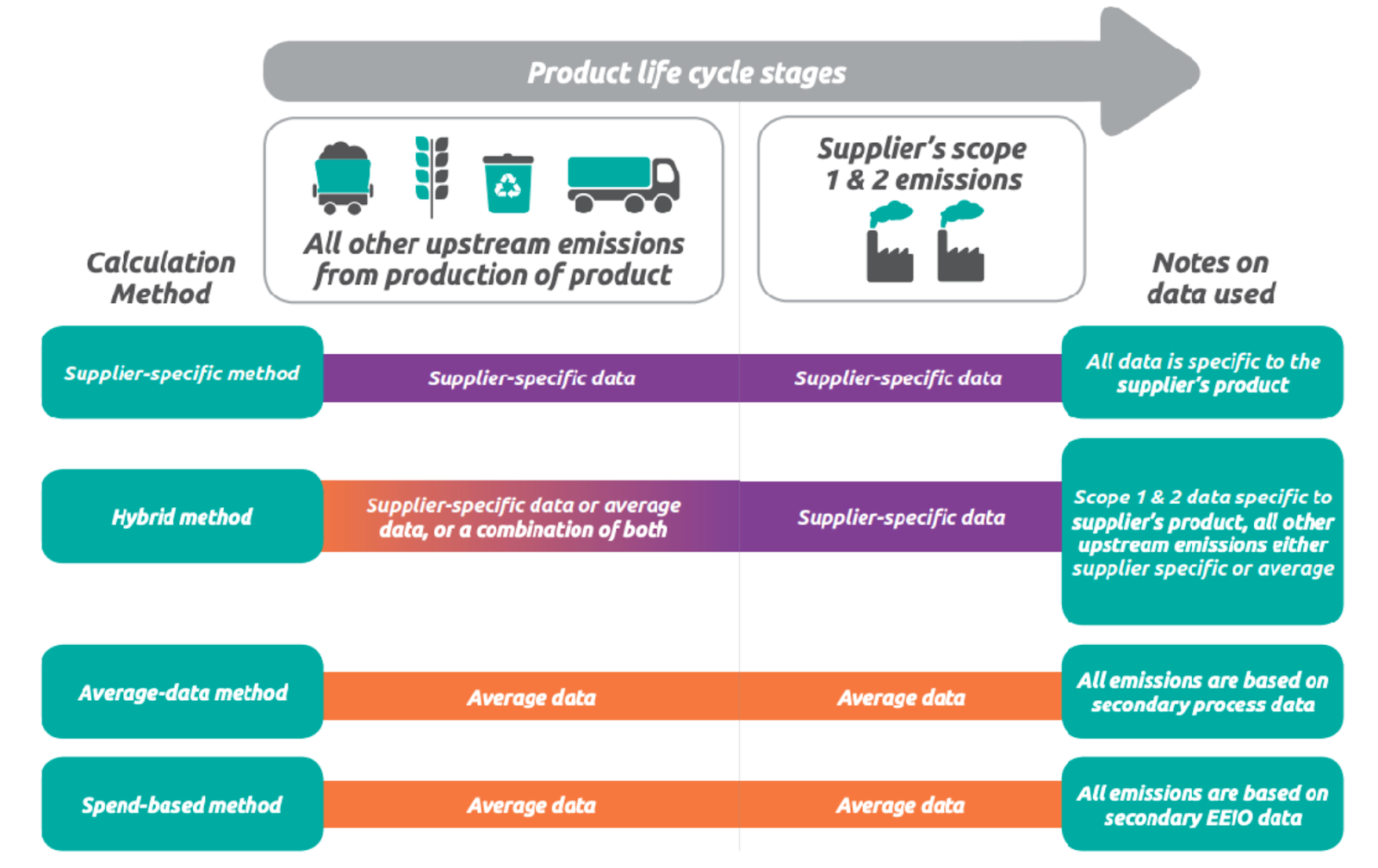There’s been a number of articles recently about “greenhushing,” or the idea that ESG is suddenly a “dirty word” in business. In their take on the topic, Grist says that “the greenest companies are talking about their climate efforts the least.” There may be something to that—but it’s not because ESG is a dirty word or a trend that’s run its course. In fact, it may be because, for leading companies, the value of emissions management lies beyond the annual ESG report.
If there is a competitive advantage to be gained by having a robust sustainability program—and we strongly believe that there is—it will go to the companies taking real action: committing to science-based targets, cutting emissions, and decarbonizing their product offering. Those who over-rotate on reporting their emissions data, at the cost of actually cutting emissions, will find themselves left behind.
However, trailblazing sustainability programs in 2024 are doing both—taking real action and reporting on their progress. “There’s a misguided notion in carbon management that reporting and compliance is a completely separate workstream from decarbonization,” says Tim Weiss, Optera CEO. “The truth is that effective programs must balance both objectives.“
How exactly are trailblazing sustainability programs balancing those workstreams—meeting reporting standards and regulations while cutting their emissions meaningfully? Read on for a breakdown of what the world’s leading sustainability programs are doing in 2024.
Is your climate program a Trailblazer? Or more of a Newcomer? Find out where you stand in just 6 questions with Optera’s Climate Program Maturity Curve >
Trailblazing sustainability programs are working on—or have achieved—scope 3 data maturity
At the cutting edge of corporate sustainability, program managers have access to primary data for the bulk of emissions calculations, including scope 3. They’ve likely moved past the spend-based method of calculating supply chain emissions and may have even moved past the hybrid model of combining Life Cycle Assessments (LCAs) with some supplier-specific data. Instead, they are obtaining granular, accurate emissions data directly from the majority of their supply chain.

Additionally, the most mature climate programs include full upstream, or cradle-to-gate, accounting, meaning they understand not just their suppliers’ direct operational emissions, but also those suppliers’ scope 3, category 1 (Purchased Goods & Services) emissions. With this depth of data, these companies know where the best opportunities for decarbonization lie and they can hold their suppliers accountable for decarbonization goals. This will increasingly be the standard for regulatory compliance, as stated in the GHG Protocol, so while these programs may be ahead of the curve now, everyone else will eventually have to match them.
Finally, trailblazing sustainability programs have built data collection and analysis processes that are repeatable and scalable—and generate actionable insights. That empowers them to spend the bulk of their time on emissions reduction action, rather than data gathering.
Key takeaways:
-
Full coverage of scope 1, 2, and material scope 3 categories are accounted for, mostly using primary data.
-
Scope 3 data includes full upstream accounting (cradle-to-gate).
-
Data collection and analysis are repeatable, scalable, and actionable.
Trailblazing corporate sustainability programs track data in real time—and use it to drive change
Because they treat meeting existing regulations as the baseline, not the ultimate goal, trailblazing climate programs are most likely to be prepared in advance for new, more stringent regulations, including requirements around reporting. They likely verify all emissions data—scope 1, 2, and 3—with a third party.
Plus, they refresh consumption and emissions data regularly (quarterly or even monthly), so they can track real-time decarbonization progress. This data is shared across business units, so the entire business can stay on track to achieving reduction targets.
Key takeaways:
-
Fully compliant with regulations and most likely to be ready for any new regulations.
-
A third-party assurance provider verifies all external emissions reporting.
-
Data is refreshed monthly or quarterly to track progress in real time.
Trailblazing sustainability programs are cutting emissions
Because these advanced climate programs are using granular data and tracking their results in real time, they are able to create impactful strategies for transitioning to the low carbon economy. Trends in their data inform prioritization for investment and activity across operations, products and services, and the supply chain. “For Kearney, 75% of our emissions come from air travel. Our focus for the next year is to launch internal initiatives to change how we think about travel and carbon,” says Iñigo de Asua, Manager at Kearney. “By combining these efforts with an enhanced SAF [sustainable aviation fuel] strategy, we will meet our SBTi 2030 targets.”
Kearney’s plan to launch internal initiatives around business travel is an example of how the most mature climate programs share their emissions data across the business, so each department understands its role in achieving climate goals. This way, department leaders consider climate risk and climate scenario planning in their strategic outlook.
Finally, at the highest levels of the company, leaders are willing to make bold, long-term financial commitments and investments in emerging green technology—and they are willing to incentivize suppliers and peers to do the same, so the industry as a whole can make progress.
Key takeaways:
-
A clear strategy, informed by data and results, for transitioning to the low carbon economy across operations, products/services, investments, and supply chain.
-
All departments are aware of climate goals and their role in achieving them, and consider climate risk and climate scenario planning in their strategies.
-
Leaders make bold, long-term financial commitments and investments in emerging green technology to advance the industry.
They work with their suppliers—and industry peers—to achieve decarbonization across the value chain and across their industry
Speaking of industry-wide progress, the world’s leading sustainability programs are able to expand their focus outside of their own company to maximize their impact. They engage with suppliers and partners to help them meet clear decarbonization goals aligned with their scope 3 targets. They partner with their networks and peers to operationalize climate best practices. And they require suppliers and partners to adhere to environmental standards—while giving them a helping hand to do so.
Take Hewlett Packard Enterprise as an example: they have committed to having 80 percent of their supply chain (by spend) set their own science-based targets by 2030. By collaborating with suppliers to achieve this goal, rather than issuing punitive directives, HPE aims to make progress toward becoming a net-zero enterprise across their entire value chain by 2040. Meeting this industry-leading target will require a group effort, and the HPE team is building processes and tools to learn from and collaborate with not just their suppliers, but their customers, partners, and peers as well.
Key takeaways:
-
Engaging with suppliers and partners to help them meet clear decarbonization goals that align with scope 3 targets.
-
Partnering with suppliers, network partners, and/or peers to drive reductions and best practices across the industry.
-
Suppliers must adhere to environmental standards, and they help them achieve those goals.
What’s the next frontier for the world’s most advanced corporate sustainability programs?
While these sustainability programs are already leading the way, meeting their ambitious goals will require them to go even further. In the next year, we anticipate these programs working more closely than ever before with cross-functional department heads and their C suite to bake decarbonization into their company’s overall strategy. According to Karina Toy, a Principal at Kearney who is focused on helping companies achieve their sustainability goals, “Leading organizations in 2024 are ones that have set sustainability goals and not only have a plan, but also have every relevant employee working towards achieving both the sustainability as well as broader business goals (even if they don’t know exactly how to get there just yet).”
Plus, while leading climate programs are already world-class in terms of data, there is room for advancement in terms of product-level accounting across scope 1, 2, and 3 emissions. This is often the last piece of the puzzle required to move away from industry averages, and into fully actionable and strategically valuable emissions data.
Finally, because these programs are ahead of the curve, they have an important role to play in pulling the market forward with them. By sharing their learnings, driving industry standardization, and redefining what’s possible for the sustainability programs that follow them, they can accelerate action beyond their own four walls. This is where we hope to see leading sustainability programs push back against the “greenhushing” trend—using their influence to teach by example, and motivate their peers and others to join the movement.
Is your corporate sustainability program a Trailblazer? Or are you just getting started? Assess yourself in just 6 questions with the Climate Program Maturity Curve >


